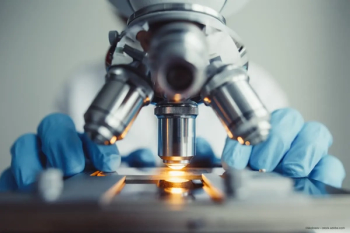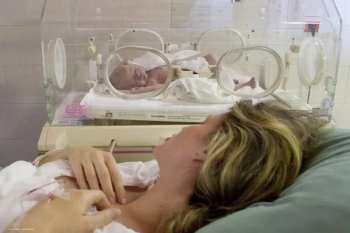
Very-high-frequency ultrasound improves ICL sizing precision
A very-high-frequency ultrasound device provides a range of detailed intraocular measurements that enable highly accurate ICL sizing and placement.
Implantable collamer lens (ICL) implantation is reversible, spares the cornea from permanent change, and expands the treatment range up to -20 D for patients with myopia and up to 6 D for those with astigmatic myopia. Additionally, ICL implantation can produce excellent outcomes: in United States Food and Drug Administration clinical trials of the Visian Toric ICL (STAAR Surgical) in patients with mean myopia of -9.37 D and mean astigmatism of +1.95 D, 82% of the eyes were 20/20 or better uncorrected, and 54% of the eyes were 20/16 or better uncorrected.1
In a more recent retrospective study of my Visian Toric ICL patients, 87% of eyes achieved postoperative spherical equivalent of 0.5 D or less. These features and outcomes are among the reasons why I am an enthusiastic ICL devotee, and why I recommend these implantable lenses even to patients with low myopia, in contrast to many of my peers, who relegate them to patients who fall outside of approved LASIK parameters.
ICL sizing
Despite over a decade of excellent outcomes, the ICL adoption rate is not as robust as might be expected. Many consider lens sizing limitations to be among the factors responsible for under-utilisation. The most widely used ICL sizing method entails obtaining white-to-white (WTW) measurements and plugging the data into the Online Calculation and Ordering System. This combination results in the correct-size ICL in most cases, but it is also associated with rare, high-risk outlier outcomes.2
Phakic lenses occupy the space between the posterior surface of the iris and the anterior surface of the crystalline lens. Because of the limited space here, and the need for aqueous humour to pass through, it is critical to measure this area accurately before surgery.
Precise sizing of the ICL is crucial because it affects the vault. Ideally, the size of the vault should be about 250–750 μm. If a vault is less than 250 μm, there is a risk of anterior subcapsular cataract formation. A vault greater than 750 μm risks pupillary block glaucoma and crowding of the angle, with possible iris chafing and resultant loss of pigment.2
Very-high-frequency ultrasound
My practice is among the first in the US to adopt an innovative very-high-frequency ultrasound (VHFUS) device—the ArcScan Insight 100 (ArcScan)—that, among other things, improves the precision of ICL sizing. The device can image behind the iris, clearly visualising the sulcus (the space between the iris and the ciliary body).
Although traditional ultrasound biomicroscopy (UBM) can visualise this space as well, the Insight 100 obtains exceptional resolution and repeatability. The device maintains a consistent perpendicularity and distance from the eye with a robotically controlled 50 MHz ultrasound transducer and automatic focal depth settings. The Insight 100’s measuring calipers are accurate to within 0.12 mm laterally behind the iris.
Each preoperative imaging scan set includes seven meridians to cover the desired area of the lens footplate location. In addition to determining the exact lateral space, the resulting images can be used to detect the presence of ciliary cysts or other pathologies, aiding surgical planning.
High-risk outcomes are rare in refractive surgery practices, but because of the sizing challenges and the unlikely—though possible—event of pupillary block glaucoma or cataract formation, the first 24 hours after ICL implantation can be stressful.
Surgeons like me, who perform a high volume of ICL procedures, have had the experience of implanting a lens that is too small or too large, then having to remove the lens or do an ICL exchange. The ArcScansystem essentially eliminates that concern and enables me to offer this excellent refractive surgery option to my patients with a high degree of confidence in both its efficacy and its safety.
Eliminate outliers
As I mentioned, external ocular measurements are still the criteria most often used to determine ICL size. However, there are many more factors beyond WTW measurements that need to be considered. For instance, in addition to sulcus-to-sulcus measurements, the Insight 100 can measure anterior chamber depth; anterior chamber angle; angle-to-angle; anterior chamber width measured scleral spur to scleral spur; angle recess-to-angle recess lens rise; sulcus-to-sulcus lens rise; and ciliary body inner diameter (Figure 1).
The goal of these measurements is to reduce lens exchange to a very rare event. Once we secure the detailed intraocular measurements and input them into the ArcScan digital template, we upload the data to the London Vision Clinic free online ICL sizing calculator (www.iclsizing.com), which uses a dedicated nomogram to predict the vault for each ICL size (Figure 2).
This process has enabled us to eliminate the outliers. The nomogram factors in the inner ciliary body diameter, as well as the lens rise, the scotopic pupil size and the lens power. When we have those four measurements, we can reduce the scatter of the post-vault by a factor of 4, according to Dr Dan Reinstein, who is responsible for the ICL sizing nomogram and much of the research behind the ophthalmic VHFUS measurement technology.
The Insight 100’s ICL sizing capability eliminates the risk of size-related complications by selecting a lens based on direct measurements of the posterior chamber. By producing VHFUS images instead of those captured by analogue UBM systems—or WTW measurements—accuracy is assured to within 1.0 µm at the cornea and 0.12 mm laterally behind the iris.3
Retrospective study
We performed a retrospective study looking at our ICL patient cohort to assess the accuracy and predictability of utilising the Insight 100 in conjunction with the London guide available online. Analysis of the first 86 eyes of 160 ICL patients identified for this study revealed that we were able to get within 300 μm—half the thickness of a cornea—of the predicted ICL vault size 97% of the time with the ArcScan system.
Eliminating the outliers has enhanced our confidence in this procedure even further, and we believe that surgeons who have been on the fence about offering ICLs to their patients will be more likely to include these lenses in their armamentarium if concerns about high-risk outliers are eradicated. Surgeons will often use ICLs only if a patient is not a LASIK candidate, but we offer ICLs to any patient with myopia or astigmatic myopia who falls within the approved treatment parameters — even those who have lower prescriptions.
We are not afraid of encountering high-risk outcomes because we are confident about the accuracy and precision that we achieve with the Insight 100. Based on my experience with the ArcScan Insight 100, I believe that VHFUS will become the gold standard of ICL sizing. And with our ability to predict the ICL vault to this level of accuracy, I anticipate that there will be further adoption of ICLs by refractive surgeons.
Brett H. Mueller II, DO, PhD
E: [email protected]
Dr Mueller is a cataract refractive surgeon at Parkhurst NuVision in San Antonio, Texas, US. He has no disclosures related to the content.
References
1. ClinicalTrials.gov. STAAR Visian Toric ICL post-approval study (TICL-PAS). August 2020. Accessed: 5 January 2022. https://clinicaltrials.gov/ct2/show/NCT04516772
2. Packer M. The implantable collamer lens with a central port: review of the literature. Clin Ophthalmol. 2018;12:2427-2438.
3. Reinstein DZ, Archer TJ, Silverman RH, et al. Accuracy, repeatability, and reproducibility of Artemis very high-frequency digital ultrasound arc-scan lateral dimension measurements. J Cataract Refract Surg. 2006;32:1799-1802.
Newsletter
Get the essential updates shaping the future of pharma manufacturing and compliance—subscribe today to Pharmaceutical Technology and never miss a breakthrough.













































